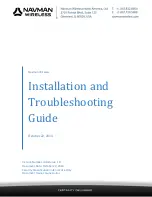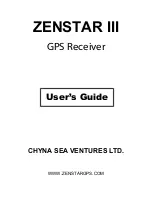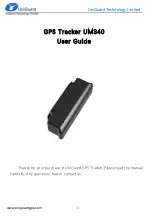
Teletrac, Inc. - Prism TM Information and Installation Guide
40
1622-0300
B1
3/18/04
Appendix A
A
PPENDIX
A
–
A
N
I
NTRODUCTION TO
G
LOBAL
P
OSITIONING
S
ATELLITE
S
YSTEMS
Global Positioning Systems - A Primer
Navigation and positioning are crucial to so many activities and over the years all kinds of
technologies have tried to simplify the task including Teletrac's RF system. The U.S. Department
of Defense (DoD) decided the U.S. military needed a super-precise form of worldwide positioning.
And fortunately, they had the kind of money ($12 billion) it took to build it. The result is the Global
Positioning System. The Global Positioning System (GPS) is a worldwide radio-navigation system
formed from a constellation of 24 satellites and their ground stations. GPS uses these "man-
made stars" as reference points to calculate positions accurate to within meters. In fact, with
advanced forms of GPS you can make measurements to better than a centimeter. In a sense, it's
like giving every square meter on the planet a unique address.
GPS receivers have been miniaturized to just a few integrated circuits and so are becoming very
economical. And that makes the technology increasingly accessible. The U.S. military was able to
successfully deploy GPS for the first time during the Gulf War in 1991. It is credited as being one
of the factors that led to the fast victory over Iraqi forces as our military units were "visible" (that
is, their locations and movements were precisely known) to strategists at all times.
Here's how GPS works in five logical steps:
Here is a summary of each of the steps involved with GPS in order to determine a location. This
is the first part of Teletrac finding the locations of vehicles using a
Prism TM
. Once a location is
determined, then it is sent via another system. We'll explain each of the following points in the
next five sections.
1. The basis of GPS is "triangulation" from satellites.
2. To "triangulate," a GPS receiver measures distance using the travel time of radio
signals.
3. To measure travel time, GPS needs very accurate timing, which it achieves with
some tricks.
4. Along with distance, you need to know exactly where the satellites are in space. High
orbits and careful monitoring are the secret.
5. Finally you must correct for any delays the signal experiences as it travels through
the atmosphere.
Summary of Contents for Prism TM
Page 2: ...Teletrac Inc Prism TM Information and Installation Guide 2 1622 0300 B1 3 18 04...
Page 4: ...Teletrac Inc Prism TM Information and Installation Guide 4 1622 0300 B1 3 18 04...
Page 6: ...Teletrac Inc Prism TM Information and Installation Guide 6 1622 0300 B1 3 18 04...
Page 18: ...Teletrac Inc Prism TM Information and Installation Guide 18 1622 0300 B1 3 18 04...
Page 20: ...Teletrac Inc Prism TM Information and Installation Guide 20 1622 0300 B1 3 18 04...
Page 27: ...Teletrac Inc Prism TM Information and Installation Guide 1622 0300 B1 3 18 04 27...
Page 35: ...Teletrac Inc Prism TM Information and Installation Guide 1622 0300 B1 3 18 04 35...
Page 39: ...Teletrac Inc Prism TM Information and Installation Guide 1622 0300 B1 3 18 04 39...
Page 49: ...Teletrac Inc Prism TM Information and Installation Guide 1622 0300 B1 3 18 04 49...
Page 53: ...Teletrac Inc Prism TM Information and Installation Guide 1622 0300 B1 3 18 04 53...
Page 59: ...Teletrac Inc Prism TM Information and Installation Guide 1622 0300 B1 3 18 04 59...
Page 61: ...Teletrac Inc Prism TM Information and Installation Guide 1622 0300 B1 3 18 04 61...
















































